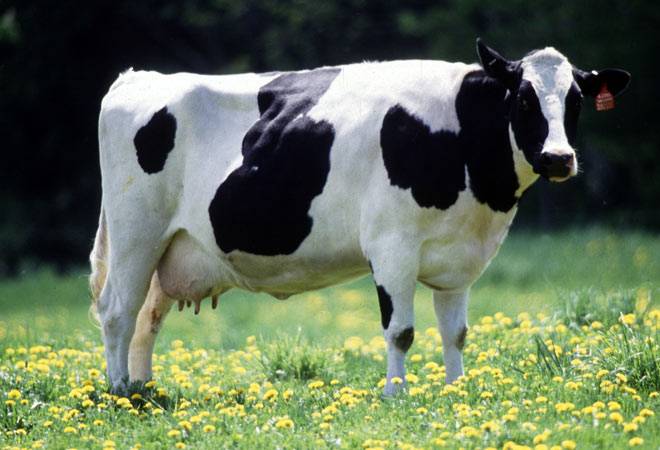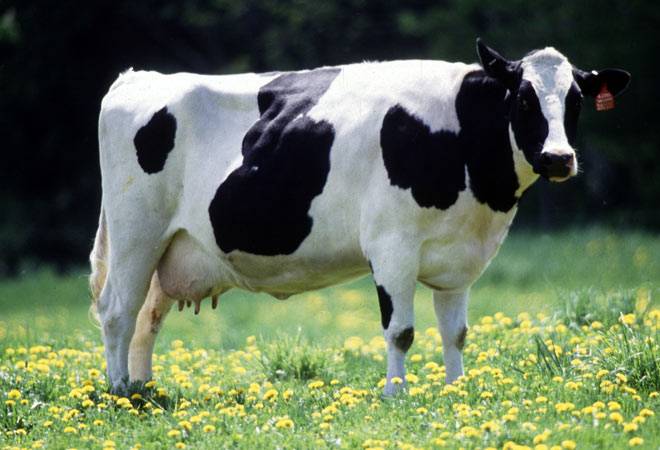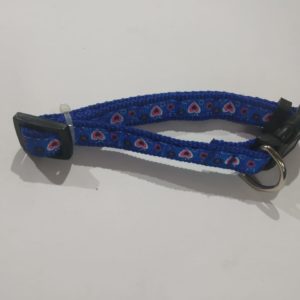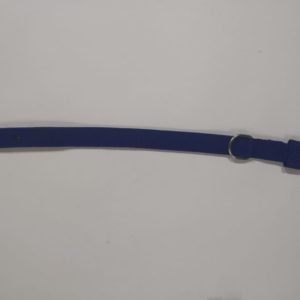
January 19, 2020
Best ways to care your dairy animals.

| General care and management of calf |
| Good feeding and management for the calves should be given, so that they develop well and will become useful replacement stock.The feeding and care of the calf begins before its birth.The dam should be dried 6-8 weeks before expected date of calving and should be fed well.Underfed animals will give weak and small calves. Early Management Immediately after birth remove any mucous or phlegm from those nose and mouth.Normally the cow licks the calf immediately after the birth. This helps to dry off the calf and helps in stimulating breathing and circulation.When the cow does not lick or in cold climate, rub and dry the calf with a dry cloth or gunny bag for stimulating breeding and circulation. Provide artificial respiration by compression and relaxing the chest with handsThe naval should be tied about 2-5 cms away from the body and make a cut 1cm below the ligature and apply tincture Iodine or boric acid or any antiseptics.Remove the wet bedding from the pen and keep the stall very clean and dry in condition.The birth weight of the calf should be recorded.Wash the cow’s udder and teats preferably with chlorine solution and dry. Allow the calf to suckle the first milk of the mother cow i.e. Colostrum.The calf will be standing and attempts to nurse within one hour. Otherwise suitable assistance should be given to the weak calves. Feeding of Calves Feed colostrum i.e. the first milk of the cow for the first 3 days. The colostrum is thick and viscous.It contains higher proportions of Vitamin A and proteins.The proteins are immune globulin which gives protection against many diseases.Colostrum contains antitrypsin which avoids digestion of immunoglobulins in the stomach and is absorbed as it is.Feed milk twice a day and for weak calves feed thrice a day.The limit of liquid milk feeding is 10 % of it’s body weight with a maximum of 5-6 liters per day and continue liquid milk feeding for 6-8 weeks. Over feeding causes ‘Calf Scours’.The milk replacers can be given to replace whole milk.Give calf starter after one month of age.Provide good quality green fodder and hay from 4th month afterward.Feeding of antibiotics to calves (as per the advise of the veterinarian) improves appetite, increases growth rate and prevent calf scours. E.g. Aureomycin, Terramycin etc. Other management practices Identify the calf by tattooing in the ear at birth, and branding after one year.Dehorn the calf within 7-10 days after birth with red hot Iron or caustic potash stick or electrical method.(as per the advise of the veterinarian)Deworm the calf regularly to remove worms using deworming drugs. Deworm at 30 days interval. (as per the advise of the veterinarian)House the calves in individual calf pens for 3 months afterwards in groups.After six months male and female calves should be housed separately.Weigh the calves at weekly interval up to 6 months and at monthly interval afterward to know the growth rate.Mortality in calves is more in first month due to pneumonia.Extra teats beyond 4 should be removed at 1-2 months of age (as per the advise of the veterinarian).Pruning 8-9 weeks of age, males should be castrated.Keep the body clean and dry to avoid fungal infection.Mineral-blocks should be provided, so that the calves lick and no chance for mineral deficiency.Wean the calf from the mother and feed through pail feeding system. |

| General care and management of Heifer |
| Better Care and Management of heifer will give high quality replacement stock to the dairy farm.Feed the heifer sufficiently to produce normal growth. During the early stage relatively more protein than energy is needed.Most heifers grow well if excellent hay is given as much they can eat. The amount of growth depends upon the quality of forage fed.The heifers should be provided with a dry shelter free from drafts. A loose housing system with a shelter open to one side is sufficient.The size rather than the age of a dairy heifer at breeding time is important. Breeding under sized animals is never profitable.Though the heifer that is bred to calve at an older age yields higher milk yield in the first lactation, the total milk produced by such a cow will be less when compared to the heifers that freshens at an early age. Usually the heifer is bred to freshen at 24-30 months of age.Place the heifer in a separate shed about 6-8 weeks before calving time.Feed 2 – 3 kgs of concentrate daily and adequate forage also.Before calving let the heifer becomes accustomed to handling and to the procedures used in the milking herd.Maintenance of health among heifers is very important for proper growth.The health among the heifers is maintained by hygienic housing, water, balanced feeding and taking necessary preventive steps against common diseases.Periodically the heifers in the herd should be checked for their proper growth and other progress.Animals lagging behind below the required standards should be removed from the herd. |
| General care and management of Milch animal |
| To get high milk during any lactation, the milch animal should be properly fed and necessary care and management practices should be followed.Provide green succulent forage together with leguminous hay or straw to the extent of animal can consume, so that all its maintenance requirements are met through forage feding.Extra concentrate at the rate of 1 kg for every 2 to 2.5 liters of milk should be provided. Salt and mineral supplements should be given to maintain the lactation.Never frighten or excite the animals. Always treat them gently and with kindness.With proper feeding and care, a cow will come to heat within 16 days of calving. Do not with hold insemination unnecessarily after the signs of heat are noticed in a cow.The shorter the interval between calvings, the more efficient the animal is as a milk producer.By maintaining proper records of breeding and calving of the animals will ensure a study flow of milk throughout the year.Individual attention to feed each animal according to its production is a must. For this purpose maintain individual production records.Keep up regularity of feeding. Concentrate mix is fed before or during milking, when as roughage after milking.Water should be provided to drink at will or at frequent intervals. It is more beneficial, if the animal is maintained on paddy straw as sole roughage.Regularity in milking is essential.Rapid, continuous, dry hand milking should be practiced without undue jerking of teats. Milking should be done with whole hand, but not with thumb and index finger.Cows should be trained to let down milk without calf suckling. This will held to wean the calves early.Loose housing with shelter during hot part of the day should be provided. The animals will get maximum exercise in loose housing system.Grooming of the cows and washing of the buffaloes before milking help in clean milk production.Daily brushing will remove loose hair and dirt from the coat. Grooming will also keep the animal hide pliable.Wallowing of buffaloes or water spraying on their bodies will keep the buffaloes comfortable especially in summer.Common ailments should be properly detected and treated.Common vices should be properly detected and care should be taken. Eg. Kicking, licking, suckling etc.Provide at least 60 – 90 days dry period between calvings. If the dry period is not sufficient, the milk yielding of subsequent lactation will be reduced.Vaccinate the cows- against important diseases and also guard against insects and pests.Every animal should be numbered and particulars pertaining to milk, fat percentage, feed taken, breeding, drying and calving dates should be recorded.Check for mastitis regularly. |
| General care and management of Pregnant animal |
| The good care and management practices given to pregnant animal will give good calf and also high milk yield during the successive lactation.Extra concentrate mix of 1.25 to 1.75 kgs should be provided for pregnant animal and also feed good quality of leguminous fodder.The animal should not be not – lean – not fat in condition.Provide clean drinking water and protection from thermal stress.Do not allow them to mix with other animals that have aborted or that are suffering from or carriers of diseases like brucellosis.Allow moderate exercise, which helps in calving normally.Do not allow them to fight with other animals and take care that they are not chased by dogs and other animals.Avoid slippery flooring conditions, which causes the animal to fall which will leads to fractures, dislocation etc.If accurate breeding records are available, calculate the expected date of calving. Separate it one or 2 weeks before and shifted to individual parturition pens.These pens are thoroughly cleaned and fresh bedding may be provided.Feed one kg extra concentrates during last 8 weeks of gestation.Feed laxative about 3 – 5 days before and after calving (Wheat bran 3 kgs + 0.5 gms of Groundnut cake + 100 gms of mineral mixture of salt).Symptoms of delivery may be observed i.e. swelling of external genitalia, swelling of udder, usually majority of animals will deliver without any help.If there is any difficulty, provide veterinary help.After parturition external genitalia, flank should be cleaned with proper care.Placenta will normally leave the cow within 2 – 4 hours after calving. If not, takes the help of a veterinarian.Take care of the animal before calving from milk fever. Give calcium supplement.Sometimes the udder will be swollen just before calving, such cases remove the milk partially.Provide always free access to drinking water. |




